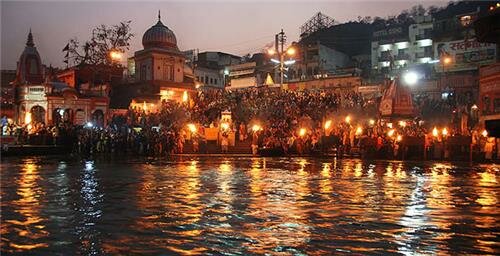THE SECRET OF PIOUS GANGA
- Posted by Miss Priyanka Negi
- Posted in Latest Post, Paramedical Sciences

It is a well- as known fact that River Ganga is considered as most pious river in Hindus religion. And so the water of Ganga is considered the Holy water which is also known as “Ganga-Jal”.
River Ganga symbolizes all rivers and water bodies in India, it freely and permanently meets various water requirements of people on its banks.
The fact is, millions of Hindus take bath in the Ganga River every year, and many of them have some contagious diseases, skin disorders etc. But there is not even a single case recorded of any disease spreading from person to person after taking a bath in this river.
And owing to this reason this question is often raised by scientists, why is the Ganges’s water (Gangajal) referred as pious and what is the secret behind its purity?
So let’s find out the secrets of pious ganga–
There are so many scientific reasons which make Ganga River pure and pious. The two major factors which give its unique ability are:
1) An Unknown Factor
- In the study conducted by the Malaria research center in New Delhi it was observed that the water from the upper reaches of Ganga did not host mosquito breeding and also prevented mosquito breeding in any water it was added to.
- E Nelson, a British physician noticed that the water of Ganga when taken even from one of its dirtiest mouths at Hooghly, by the ships returning to England, remained fresh throughout the journey.
- S. Bhargava, an Indian environmental professor of hydrology has spent a lifetime performing experiments and studying the amazing properties of Ganges. He measured the remarkable self-cleaning properties of Ganga River in an exhaustive three years study which showed that Ganges able to reduce its biochemical oxygen demand level much faster than other rivers. That helps to increase the level of dissolved oxygen. He says that in most rivers, organic material usually exhausts a river’s available oxygen and starts putrefying but in the Ganges an unknown substance or “X factor” that Indian refer to as a “disinfectant” act on organic materials and other things. So the Ganges self purifying quality leads to oxygen levels 25 times higher than any other river in the world.
2) Bacteriophage
- Ernest Hanbury Hankin, an English bacteriologist worked on the frequent outbreaks of cholera. During his study on Vibrio cholerae which causes the deadly cholera disease, when put into the water of Ganga bacteria died within 3 hours. The same bacteria continued to thrive in distilled water even after 48 hours.
- In 1896, after testing the water of Ganga Hankin published, through the Pasteur Institute, a French journal paper in which he described the antibacterial activity of a then unknown source in the Ganga River in India. He suggested that it was responsible for limiting the spread of cholera in India.
- Hankin’s work was nonetheless recognized a generation later as being among the first observation of bacteriophage activity which Felix d’Herelle later described at the Pasteur Institute.
- Bacteriophage is the virus which infects and kills the bacteria. So the antibacterial effect of pious Ganga water is due to the presence of Bacteriophage in it. This makes the Ganga River bacteria free by killing them with the help of bacteriophage. In other words, the water of river Ganga can be an alternative for using antibiotics to treat bacterial diseases.
However, these days, the water of Ganga River is quite abused substantially with detergent, industrial effluents and sewage. So the river’s medicinal qualities cannot handle these things and are thus quite harmful for human consumption.
Taking into account the utility, aesthetic and religious value of the natural ecology of the Ganga, we must not allow any sort of external encroachment to preserve its pious water. Since it is the life-line of crores of our people, it is highly required to take some necessary and appropriate initiatives to save its holy water.
Priyanka Negi
Asst. Professor
UCBMSH, Dehradun
